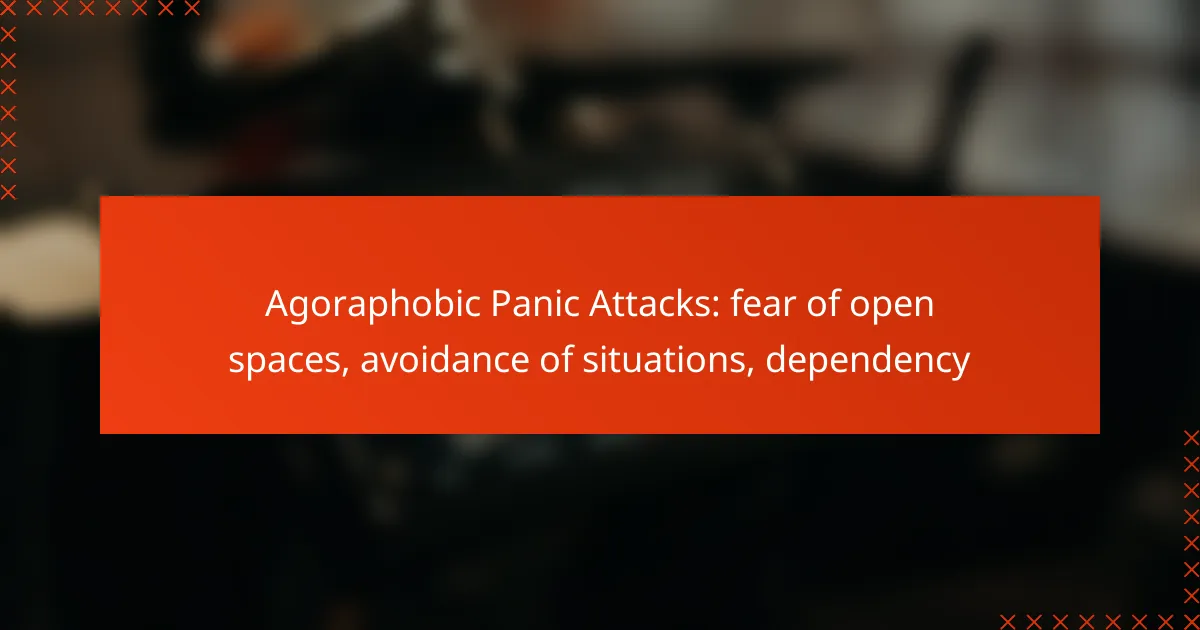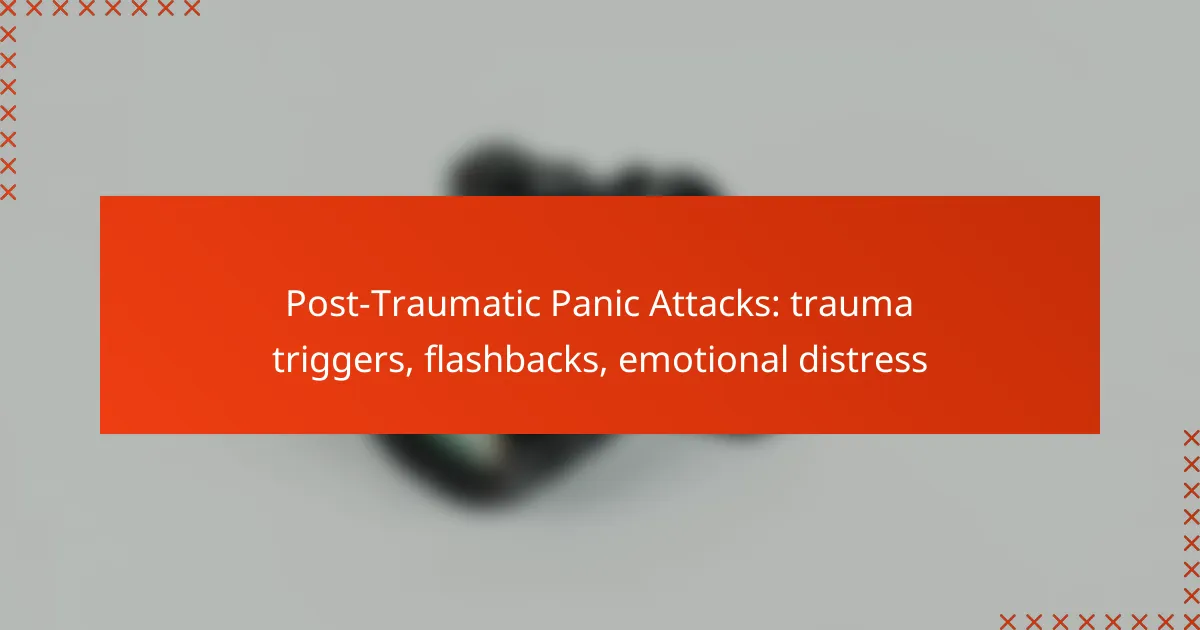Agoraphobic panic attacks are characterized by an intense fear of open spaces and a tendency to avoid situations that may trigger anxiety. Individuals often find themselves dependent on familiar environments, leading to significant lifestyle restrictions. Understanding the triggers and effective treatments can empower those affected to manage their symptoms and regain control over their lives.
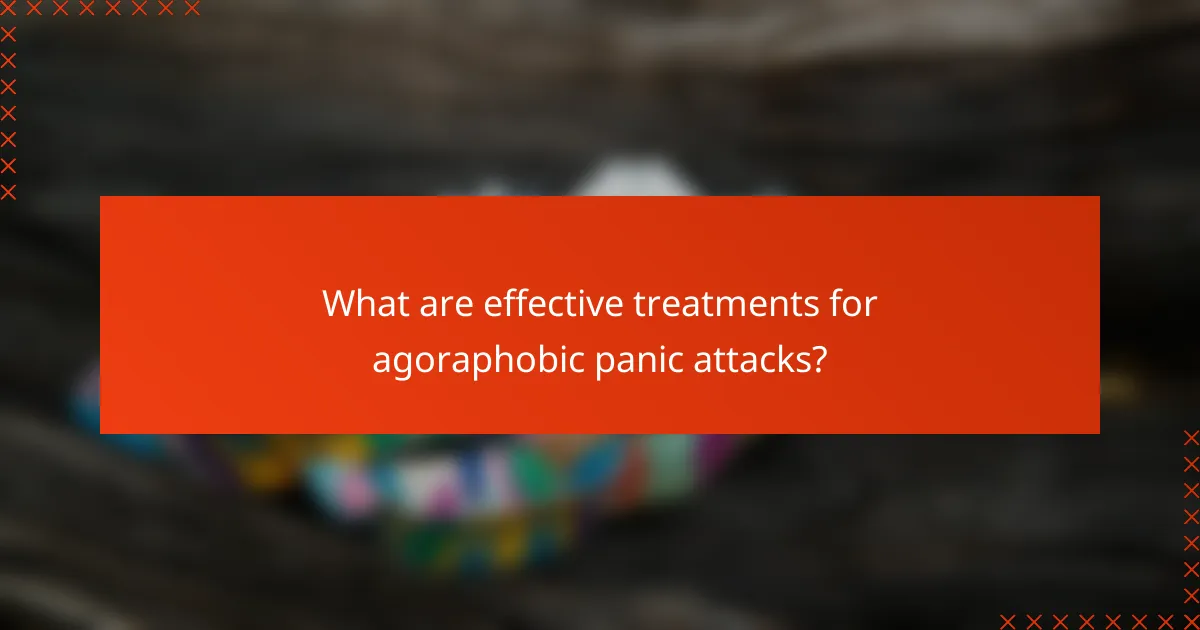
What are effective treatments for agoraphobic panic attacks?
Effective treatments for agoraphobic panic attacks include cognitive behavioral therapy, exposure therapy, medication options, and support groups. These approaches aim to reduce anxiety and improve coping strategies for individuals facing fear of open spaces and avoidance of certain situations.
Cognitive Behavioral Therapy
Cognitive Behavioral Therapy (CBT) is a structured, time-limited approach that helps individuals identify and change negative thought patterns related to their panic attacks. By addressing distorted beliefs, CBT enables patients to develop healthier coping mechanisms and reduce anxiety in triggering situations.
In practice, CBT often involves weekly sessions over several months, where patients learn to challenge their fears and gradually face them. Techniques may include journaling thoughts, role-playing, and practicing relaxation strategies.
Exposure Therapy
Exposure therapy is a specific form of CBT that focuses on gradually exposing individuals to feared situations or environments. This method helps desensitize patients to their triggers, ultimately reducing the intensity of their panic attacks.
Typically, exposure therapy starts with less intimidating scenarios and gradually progresses to more challenging ones. For example, a person may first practice deep breathing while imagining a crowded place, then move on to visiting a park or shopping center for short periods.
Medication options
Medication can be an effective adjunct to therapy for managing agoraphobic panic attacks. Common options include selective serotonin reuptake inhibitors (SSRIs) and benzodiazepines, which can help alleviate symptoms of anxiety and panic.
SSRIs, such as fluoxetine or sertraline, are often prescribed for long-term management, while benzodiazepines may be used for short-term relief during acute episodes. It’s crucial to consult a healthcare provider to determine the best medication and dosage based on individual needs.
Support groups
Support groups provide a valuable space for individuals with agoraphobia to share experiences and coping strategies. Connecting with others facing similar challenges can reduce feelings of isolation and foster a sense of community.
These groups can be found in-person or online, offering flexibility for participants. Engaging in discussions and activities with peers can enhance motivation and provide practical tips for managing panic attacks in daily life.
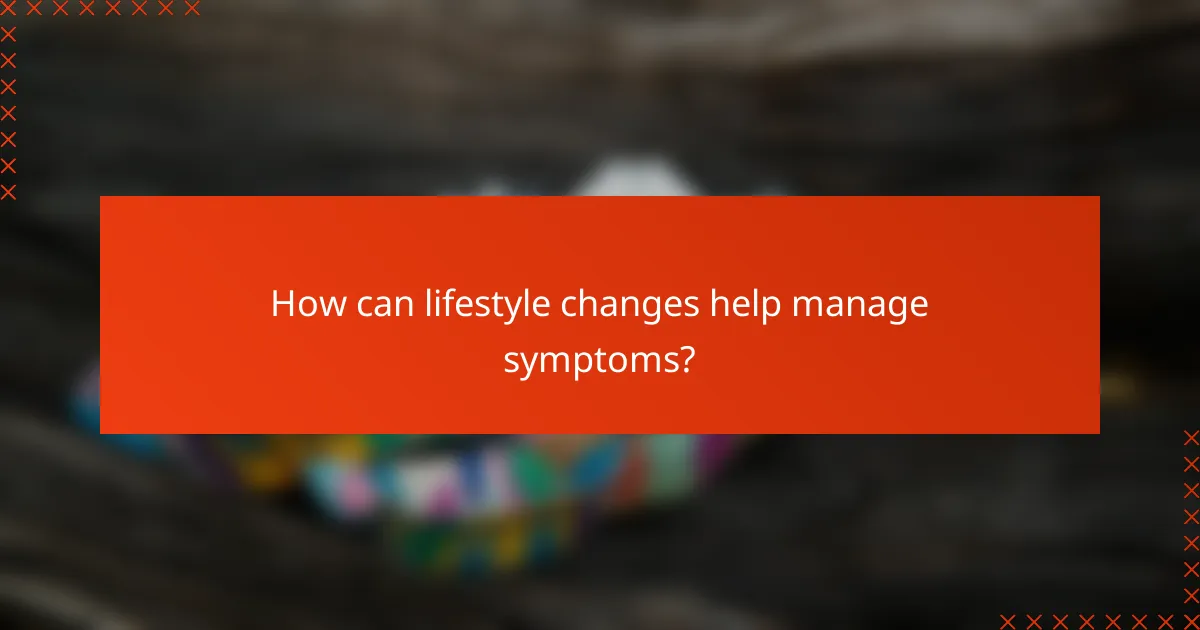
How can lifestyle changes help manage symptoms?
Lifestyle changes can significantly alleviate symptoms of agoraphobic panic attacks by promoting overall well-being and reducing anxiety. Incorporating regular exercise, mindfulness practices, and a healthy diet can enhance emotional resilience and improve coping mechanisms.
Regular exercise
Engaging in regular exercise can help manage symptoms of agoraphobia by releasing endorphins, which improve mood and reduce anxiety. Aim for at least 150 minutes of moderate aerobic activity each week, such as brisk walking, cycling, or swimming.
Consider starting with short sessions and gradually increasing duration and intensity. Group classes or outdoor activities can also provide social support, which may reduce feelings of isolation.
Mindfulness practices
Mindfulness practices, such as meditation and deep-breathing exercises, can help ground individuals experiencing panic attacks. These techniques encourage awareness of the present moment, reducing the tendency to ruminate on fears associated with open spaces.
Start with just a few minutes each day, gradually increasing the time as comfort grows. Apps or local classes can provide guidance and structure to enhance your mindfulness journey.
Healthy diet
A healthy diet plays a crucial role in managing anxiety and panic symptoms. Focus on a balanced intake of whole foods, including fruits, vegetables, whole grains, lean proteins, and healthy fats, while limiting processed foods and sugar.
Staying hydrated is also essential; aim for about 2 liters of water daily. Consider consulting a nutritionist to tailor your diet to your specific needs and preferences, ensuring it supports your mental health effectively.
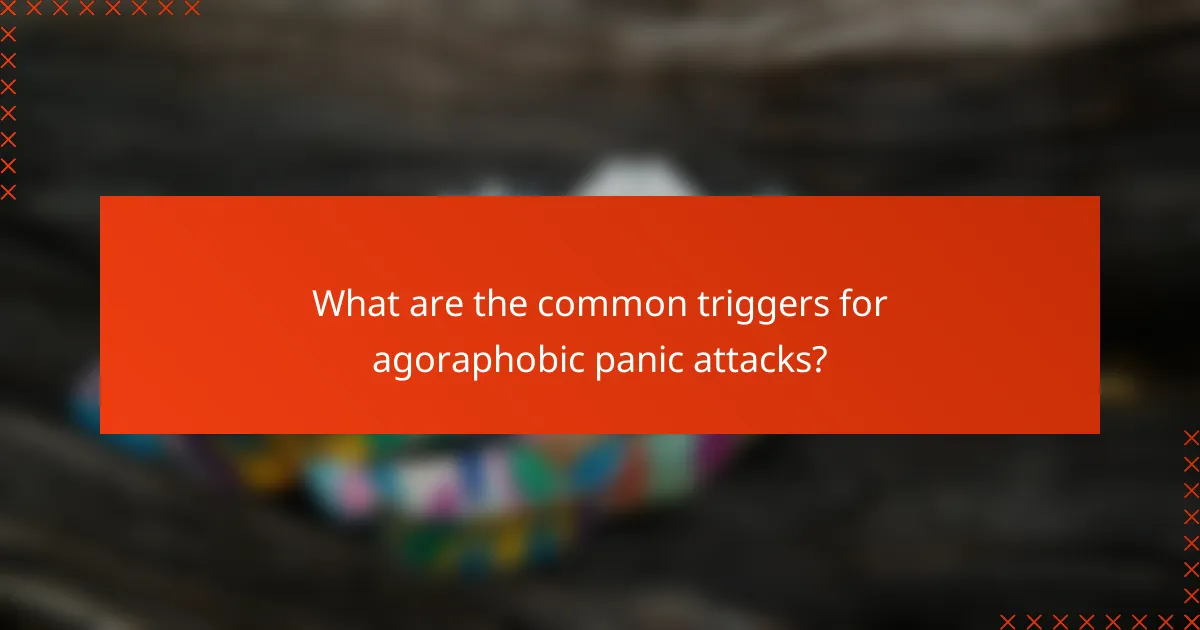
What are the common triggers for agoraphobic panic attacks?
Common triggers for agoraphobic panic attacks include situations that involve open spaces, crowded areas, or being alone while traveling. These triggers can provoke intense fear and anxiety, leading individuals to avoid such environments altogether.
Open spaces
Open spaces can be particularly daunting for those with agoraphobia. The vastness and lack of immediate escape routes may trigger feelings of vulnerability and panic. For example, parks, large parking lots, or wide streets can evoke anxiety, making individuals feel exposed and helpless.
To manage this trigger, start by gradually exposing yourself to open spaces in a controlled manner. Begin with smaller, less intimidating areas and slowly increase the size of the spaces as comfort grows.
Crowded places
Crowded places, such as shopping malls, concerts, or public transport, can overwhelm individuals with agoraphobia. The sheer number of people can create feelings of entrapment, leading to panic attacks. It’s common for those affected to feel suffocated or unable to breathe in these environments.
To cope with crowded situations, consider visiting during off-peak hours when crowds are thinner. Practicing deep breathing techniques or carrying a calming item can also help alleviate anxiety when faced with large groups.
Traveling alone
Traveling alone can be a significant trigger for panic attacks in individuals with agoraphobia. The fear of being stranded or unable to seek help can create a sense of isolation and dread. Whether it’s a short trip to the store or a longer journey, the thought of navigating unfamiliar places alone can be daunting.
To ease this fear, plan your travels in advance and familiarize yourself with the route. Using public transport during busy times or traveling with a trusted friend can also provide reassurance and reduce anxiety levels.
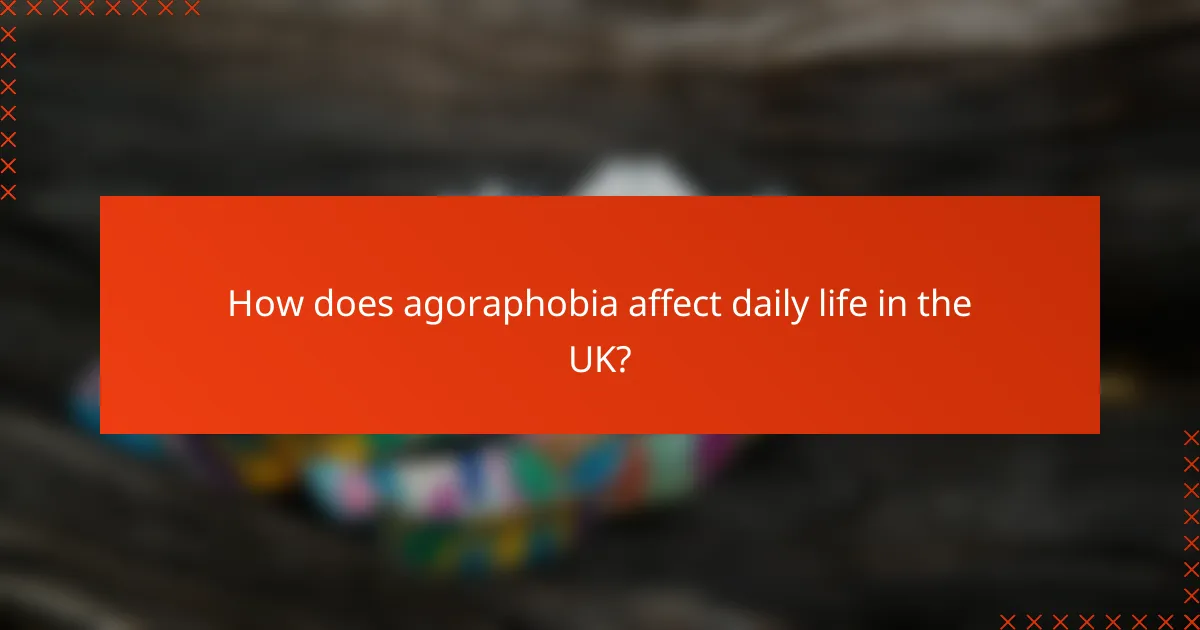
How does agoraphobia affect daily life in the UK?
Agoraphobia significantly impacts daily life in the UK by causing individuals to fear open spaces and avoid situations that may trigger panic attacks. This condition often leads to a reliance on others for support and a restricted lifestyle, making it challenging to engage in everyday activities.
Social isolation
People with agoraphobia frequently experience social isolation due to their fear of leaving home or being in crowded places. This avoidance can lead to a diminished social network, as friends and family may become less accessible over time. Many individuals may feel lonely and disconnected, which can exacerbate feelings of anxiety and depression.
To combat social isolation, it is beneficial to maintain regular contact with supportive friends or family members, even if it is through phone calls or video chats. Gradually increasing social interactions in safe environments can also help ease the anxiety associated with social settings.
Impact on employment
Agoraphobia can severely limit employment opportunities, as many jobs require commuting or working in public spaces. Individuals may find it difficult to attend interviews or maintain regular attendance, leading to job loss or underemployment. This can create financial stress and further impact mental health.
Employers may offer flexible working arrangements, such as remote work options, which can help individuals manage their condition while still contributing professionally. Seeking roles that allow for a gradual return to the workplace may also be a practical approach.
Travel limitations
Traveling can be particularly challenging for those with agoraphobia, as the fear of unfamiliar environments can trigger panic attacks. This often results in avoidance of public transport, long journeys, or even short trips outside the home. Such limitations can hinder personal growth and opportunities for leisure.
To address travel limitations, individuals can start with short, familiar trips to build confidence. Using relaxation techniques or travel companions can also help ease anxiety during travel. Setting small, achievable travel goals can gradually expand comfort zones and reduce fear associated with being in open spaces.
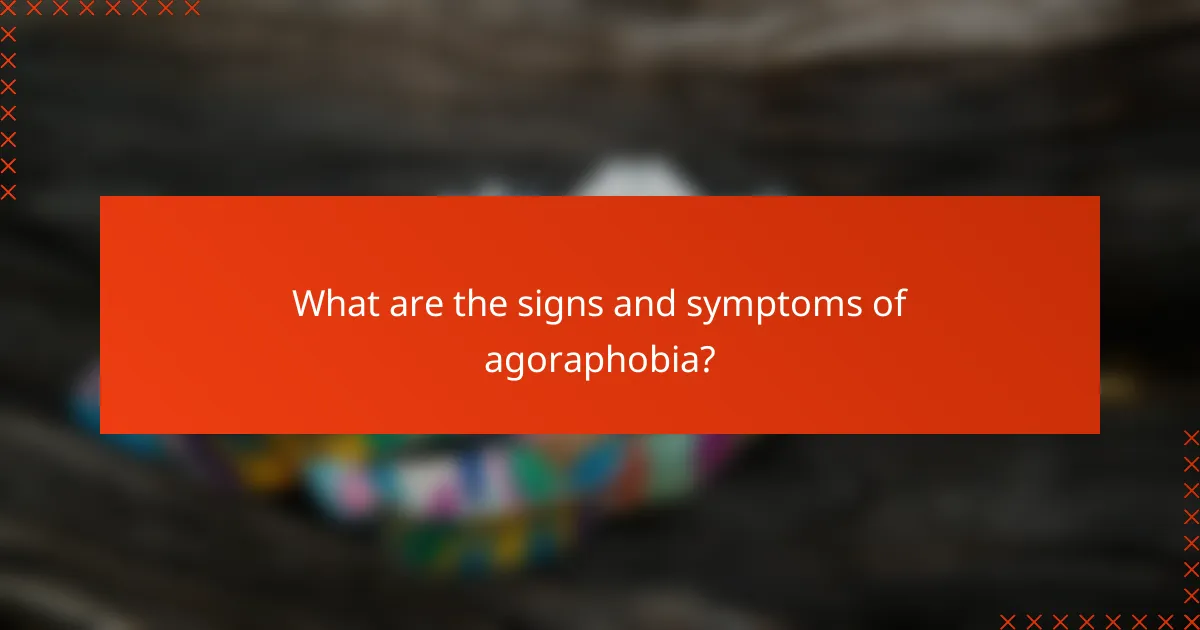
What are the signs and symptoms of agoraphobia?
Agoraphobia is characterized by intense fear or anxiety about being in situations where escape might be difficult or help unavailable in the event of a panic attack. Common signs include avoidance of open spaces, crowded places, and reliance on others for support.
Panic attacks
Panic attacks are sudden episodes of intense fear that trigger severe physical reactions, often without warning. Individuals with agoraphobia may experience symptoms such as rapid heartbeat, sweating, trembling, and feelings of impending doom.
These attacks can occur in various situations, especially in open or crowded environments, leading to a cycle of avoidance. Understanding the triggers and symptoms can help in managing and reducing the frequency of these attacks.
Fear of losing control
A significant aspect of agoraphobia is the fear of losing control in public spaces, which can exacerbate anxiety. This fear often leads individuals to avoid situations where they feel vulnerable, such as being far from home or in unfamiliar places.
To combat this fear, gradual exposure to feared situations can be effective. Techniques such as deep breathing and mindfulness can help individuals regain a sense of control and reduce anxiety in challenging environments.
